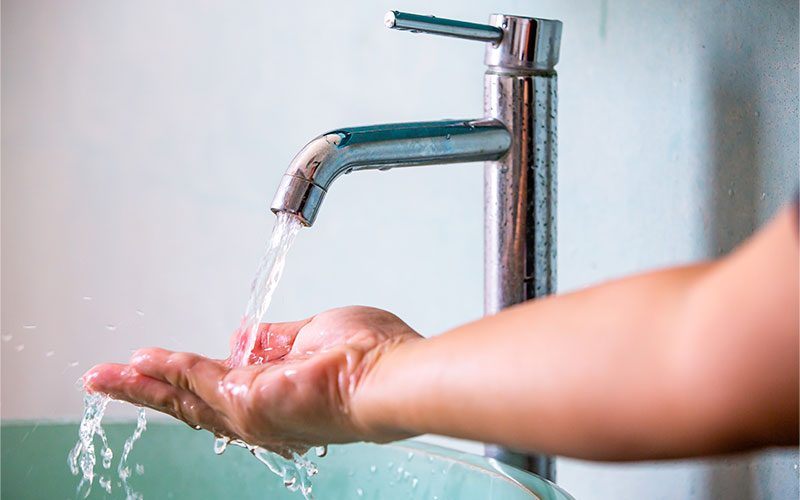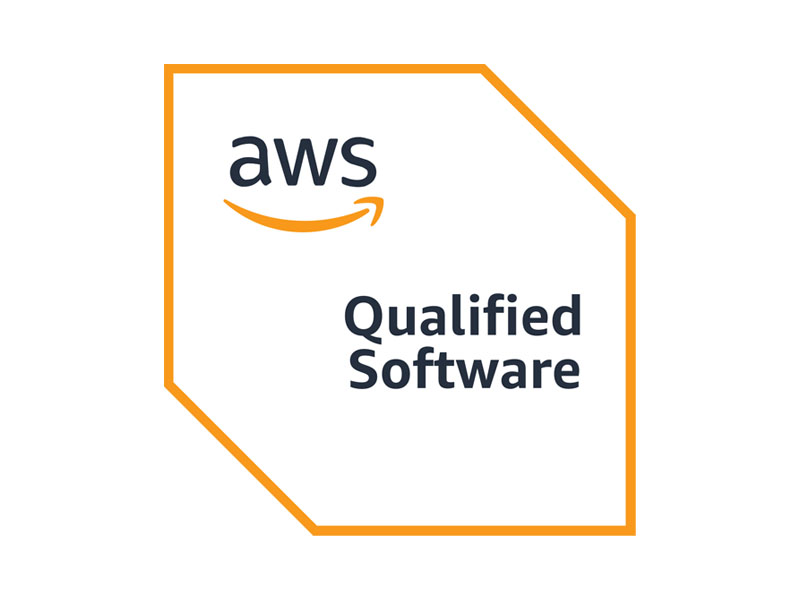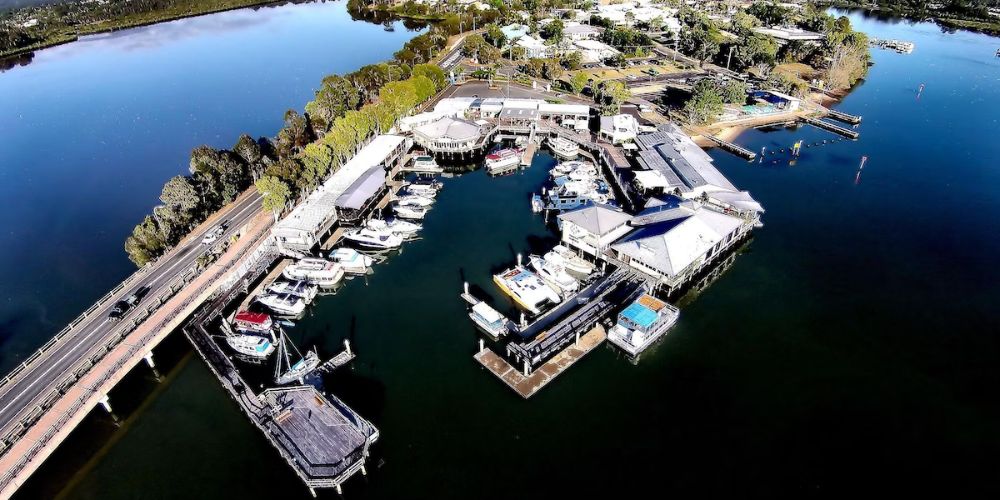FLOWD is proud to be a part of pioneering digital asset management in the water utilities sector. We are constantly refining our technology to service the water utilities of the future to be ahead of where our clients need us to be. Water Utility Magazine has published an article on how smart water metering works and the challenges and areas of opportunity for the water sector.
While the uptake of smart meters has become common in the energy industry, smart meters are still in their infancy in the water sector. Not only do smart meters help reduce costs for customers, they also allow the water sector to monitor its assets remotely, ensuring better asset management. Here, we take a look at how smart water meter technology works, the challenges and areas of opportunity for the water sector, as well as the considerations for water utilities thinking of investing in smart water meter technology.
What are digital water meters and how do they work?
A digital water meter is essentially a conventional meter linked to an electronic data logging device that collects data from the meters at regular intervals and feeds it back to the water utility, where both the customer and the water company can access the information¹.
The devices collect data by monitoring and recording consumption outputs from the meter, generally at hourly intervals, with this data then being sent digitally to the utility.
From here, customers can access the information about their water usage and the utility can review this data to manage its assets, and inform its future policy and practices.
Digital water meters have multiple benefits for both water utilities and customers. Installing digital water meters has the following advantages:
Identify leaks or flow issues
Respond to and fix flow issues faster
Quicker, safer and more efficient meter reading
Read meters without accessing customers’ properties
Provide more accurate billing to customers
Remotely monitor meters in real time
Monitor and extend the life of infrastructure assets
Improve customer engagement
Longer lifespan than mechanical water meters
The benefits for customers include:
Lower water bills
Ability to monitor water usage digitally
Identify leaks and flow issues faster and more accurately
Identify areas where water can be saved
Remote monitoring, meaning utilities don’t have to access a customer’s property.
Opportunities for the water sector
While smart electricity meters have enjoyed huge success in the utility space thanks to mandatory rollouts in Victoria and numerous trials across the country, digital and smart water meters are not as widespread yet.
This is unfortunate for both the water sector and for customers, as water is a precious resource and effective management of water resources is crucial to safeguarding supply.
The rollout of digital water meters provides water utilities and the water sector at large with a range of beneficial opportunities that can enhance customer relationships and improve business performance.
Improved customer engagement
Investing in smart water meters allows greater customer engagement for water utilities. The digital meters provide customers with real time meter readings, allowing the customer to stay on top of their water usage and help minimise their bills.
This also allows utilities to identify leaks and flow issues as they arise, illuminating bill shock for customers as these issues can be fixed quickly instead of when an unusually large bill is received. It also allows the water utility to bill customers monthly instead of quarterly, which reports show customers prefer².
Asset management
Digital water meters are one of the best ways for water utilities to monitor and maintain their assets and water infrastructure, and also extend the life of their assets.
A larger and more accurate base of data received from digital water meters is a great way for water utilities to keep track of their network and operations.
The regular data that utilities receive from the digital water meters allow companies to keep track of the assets and infrastructure in their network and identify issues faster, saving time, money and resources³.
Cost effectiveness
Although there may be an upfront cost to digital water meters, there are ongoing cost savings for both customers and water utilities thanks to the technology.
For customers, digital water meters allow for more accurate billing, more often, and also allows consumers to track their water usage to lower their bills.
For water utilities, the ability to conduct remote monitoring saves both time and money on manual monitoring. Furthermore, having a clearer understanding of how assets and infrastructure is performing in the network helps utilities to make more informed strategic decisions and avoid costly leaks.
Water conservation
One of the main uses of digital water meters is for urban water management and billing. A study conducted by Sydney Water in 2014 found that households that had digital water meters installed on the property reduced their water consumption by over 6.8 per cent compared to the control group.
Furthermore, over a three-year period post-study participants reduced their water usage by 6.4 per cent compared to the pre-trial period, indicating that reduced water usage was maintained over time, proving the long-term value of digital meters⁴.
Challenges and considerations of digital meters for the water sector
There are many positive benefits for water utilities in incorporating smart water meters, however there are also challenges that may make utilities hesitant to take on this new technology.
One of the biggest factors delaying mass rollouts has been that cost-benefit studies have failed to identify sufficient benefits to cover costs.
Completed economic studies often fail to stack up since they include only a limited number of benefit categories, and water utilities have not yet been able to articulate the full range of benefits for them and/or struggle to monetise those benefits.
A comprehensive study was commenced in 2018 by Griffith University researchers to look into benefits not normally considered by water utilities.
This study sought to reveal all potential benefits through a literature review of deployments across the world, reviews of annual reports and other water utility publications, and structured interviews with 52 industry specialists and some customer representatives.
Importantly, the experts surveyed covered a broad spectrum of departments within water businesses to ensure that all benefits could be captured.
The study resulted in a list of 75 benefits. These were classified into those benefiting the water business or the customer, or both.
Among the 57 business benefits, some were previously captured benefits such as water conservation, operational cost and capital cost savings.
However, many others were not previously considered benefits, such as: new opportunities for cost savings through the development of new algorithms; gaining efficiencies through improved knowledge of customer segments; increased knowledge of non-residential customers’ water usage patterns; and savings from the better management of disputed bills, Ombudsman referrals and customer credit.
The rapid development of technology means that some large utilities are charging ahead with smart meters, while smaller utilities are still working out their options.
There is an initial upfront cost to install smart water meter technology – estimated at between $300-$450 per meter depending on if the property is a new build or a retrofit – which may not include the associated plumbing costs, or the system and technology infrastructure upgrades required to support smart metering.
However, as more technological developments occur, the cost of digital water meter technology is expected to decrease.
There is also the challenge of how to power these digital meters. Unlike with smart electricity meters, traditional manual water meters work without a power source, therefore water utilities need to consider how they will power smart water meters on location.
Smart water meters are typically run by batteries, which creates a challenge for utilities who are considering deploying them.
Another key difference is that when it comes to electricity use, smart meters can be used as a means to incentivise particular customer behaviours.
For example, time-of-use tariffs mean that customers pay a different price for the power they use at different times of the day, allowing utilities to increase or decrease costs across a 24-hour period to best manage demand loads across the network.
For water, there are no time-of-use tariffs required to spread the load across the system, and in the current market, customers aren’t incentivised to use more or less water in any greater way than the fact that by using less water they will have a reduced water bill.
However, in the years to come, it’s worth noting that should we see a return to drought conditions, where water restrictions are reintroduced, smart water meters will provide an effective means for actually enforcing restrictions such as those relating to time and quantity of use.
The future of digital water meters
The future of digital water meters is still somewhat uncertain, however data does indicate that the adoption of smart water meter technology is on the rise in Australia and New Zealand.
Although there are challenges facing the rapid uptake of digital meters by utilities across Australia, future technological advances could see the use of these meters rise, as demand for clearer, more accurate data increases⁵.
However, the benefits and opportunities that digital water meters present to utilities and consumers can’t be ignored.
There is substantial evidence to indicate that digital water meters result in lower water consumption by customers, and improved customer engagement and communication, and asset management by utilities, and most importantly better water conservation.
¹What are Smart Meters? Fact Sheet, https://eprints.usq.edu.au/21068/1/Aravinthan_Ho_Gray_Butler_Connell_FactSheet_PV.pdf
²Pricing and the Psychology of Consumption, https://hbr.org/2002/09/pricing-and-the-psychology-of-consumption
³Digital Water Metering: The time is now, https://assets.kpmg/content/dam/kpmg/au/pdf/2018/digital-water-metering-readiness.pdf
⁴Water-saving impacts of Smart Meter technology: An empirical 5 year, whole-of-community study in Sydney, Australia, https://www.researchgate.net/publication/265171957_Water-saving_impacts_of_Smart_Meter_technology_An_empirical_5_year_whole-of- community_study_in_Sydney_Australia
⁵Smart Water Metering Technology for Water Management in Urban Areas, http://ozwater.org/Watersource/wp-content/uploads/2019/02/001-Koech-Richard_v1.pdf
Original Article published by Utility Magazine on November 4 2020. Link to article here




